Botanical name : Solanum lycopersicum
Common name : Tomato, Cherry tomato, Paste tomato
Easy for seed saving
Lifecycle: annual
Pollination: Self. Flowers remain sealed so external pollination is excluded. A limited number of varieties do have flowers that are not sealed and can be crossed by insects.
Mating system: Perfect flowers
Suggested spacing: Same as for eating production
Seed specific requirements: No specific requirements for seed production
Isolation distance: Keep plants far enough apart so that they cannot physically intermingle. If flowers have an exserted stigma then keep those varieties 15 m apart from other varieties with exserted stigmas.
Population size: 5 to 10 plants. A single plant will produce viable seed.
Seed maturity: Seed is mature when the fruit is fully ripe, as for eating.
Processing method: Seed is most effectively saved by fermenting the pulp to separate seed from its gel sac. Seed can also be directly spread onto paper along with pulp and dried with its pulp.
Expected seed viability: 4 years
Images
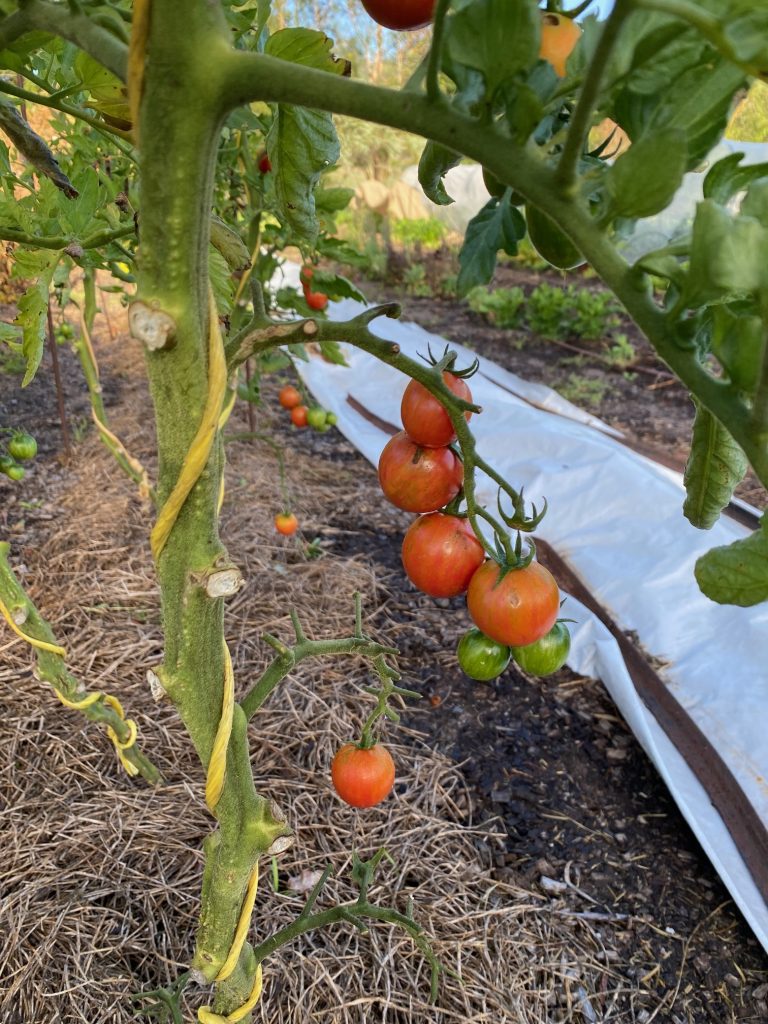
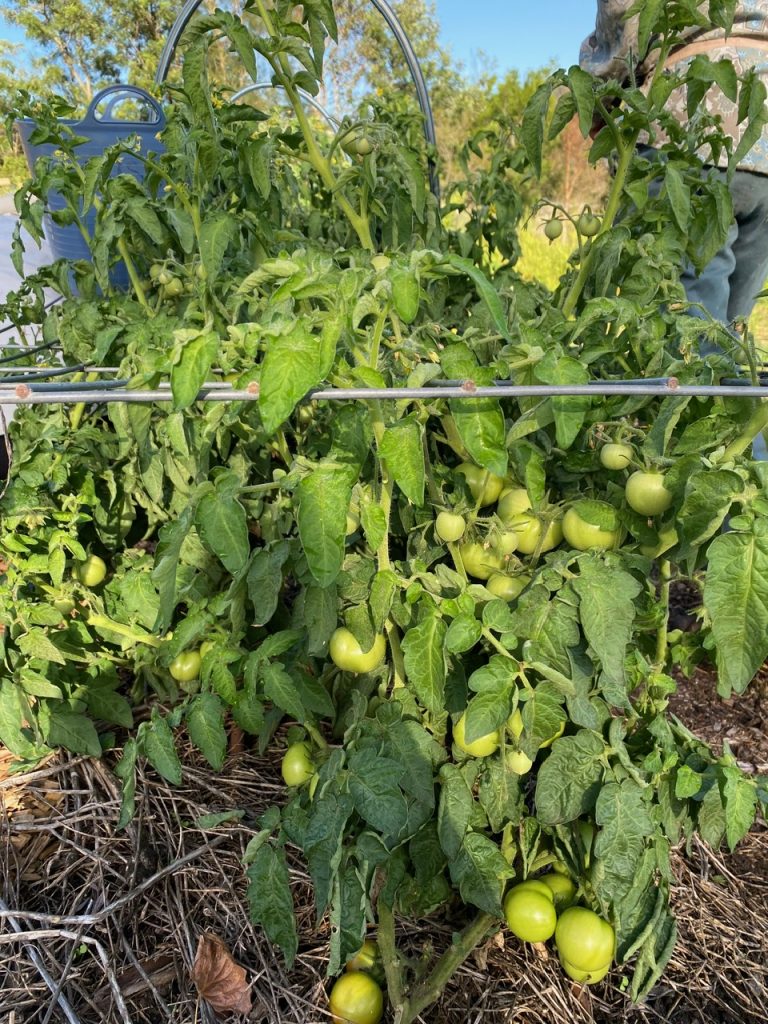
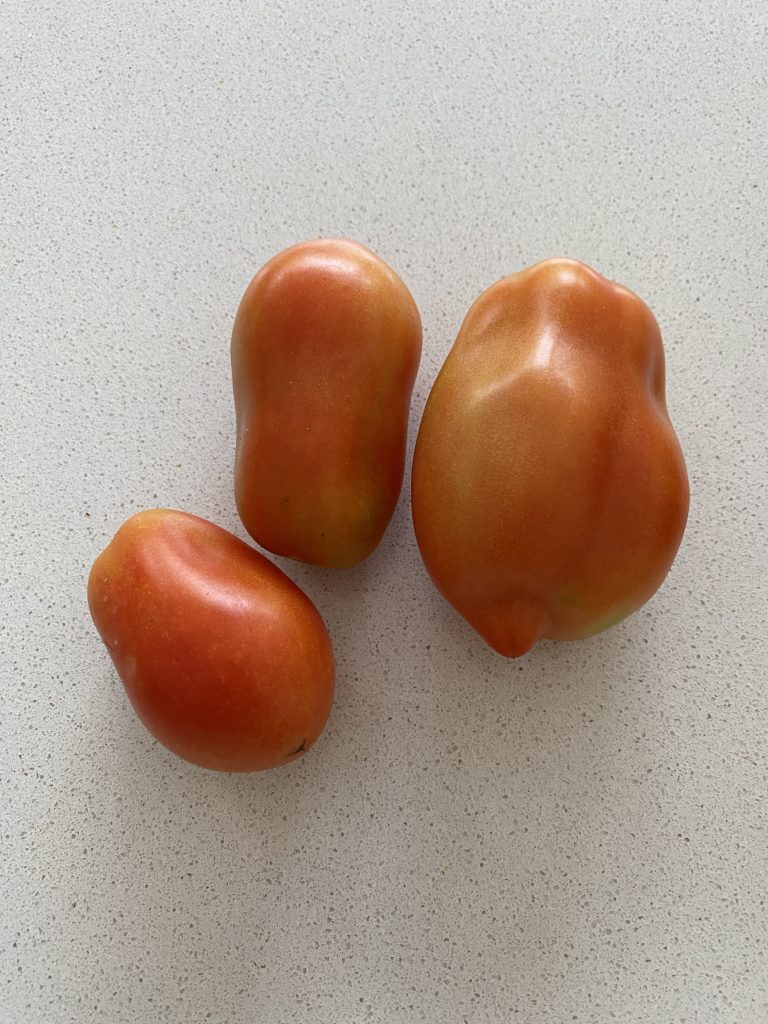

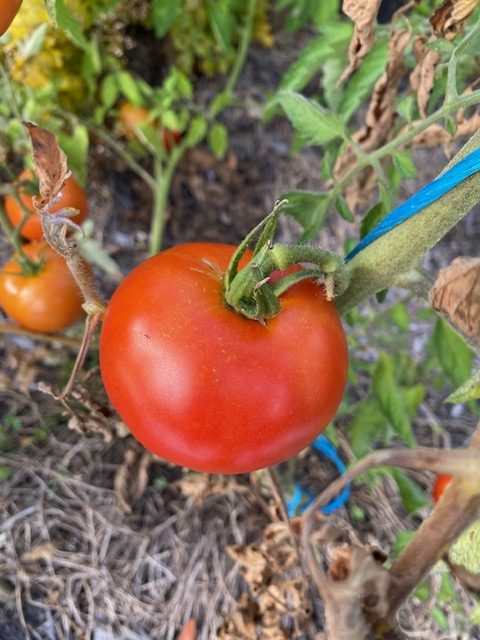

Growing for seed
When growing tomatoes for seed, the main thing we need to know about our tomato variety is whether it is one of the rare varieties with what is technically called an exserted stigma. In this case, the stigma sticking out the end of the flower allows insects access to cross-pollinate with pollen from other varieties. This is relatively rare, but it is fairly easy to identify if your variety has this type of flower just by looking closely at the flowers. Check whether the stigma is sticking out the end or not. If the cone of the flower appears closed, then you have nothing to worry about. If the flower is open, you should either keep the variety 15m away from any other variety with an open flower or use a technique such as bagging the blossoms of fruits you want to save seed from to ensure they are not cross-pollinated.
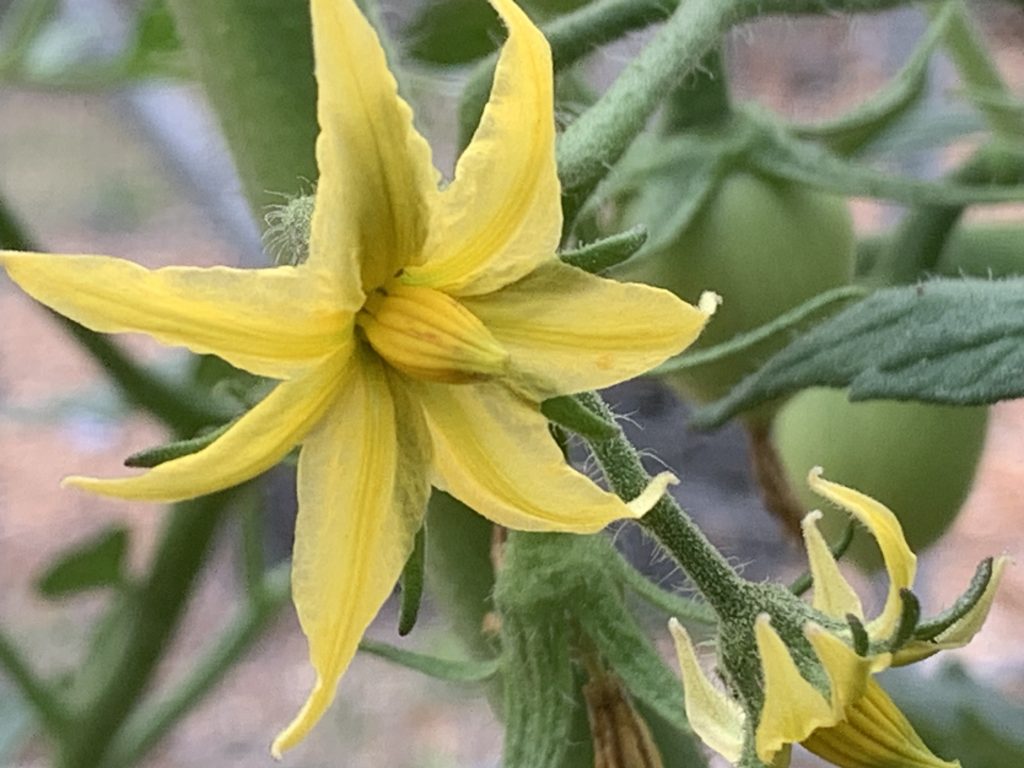
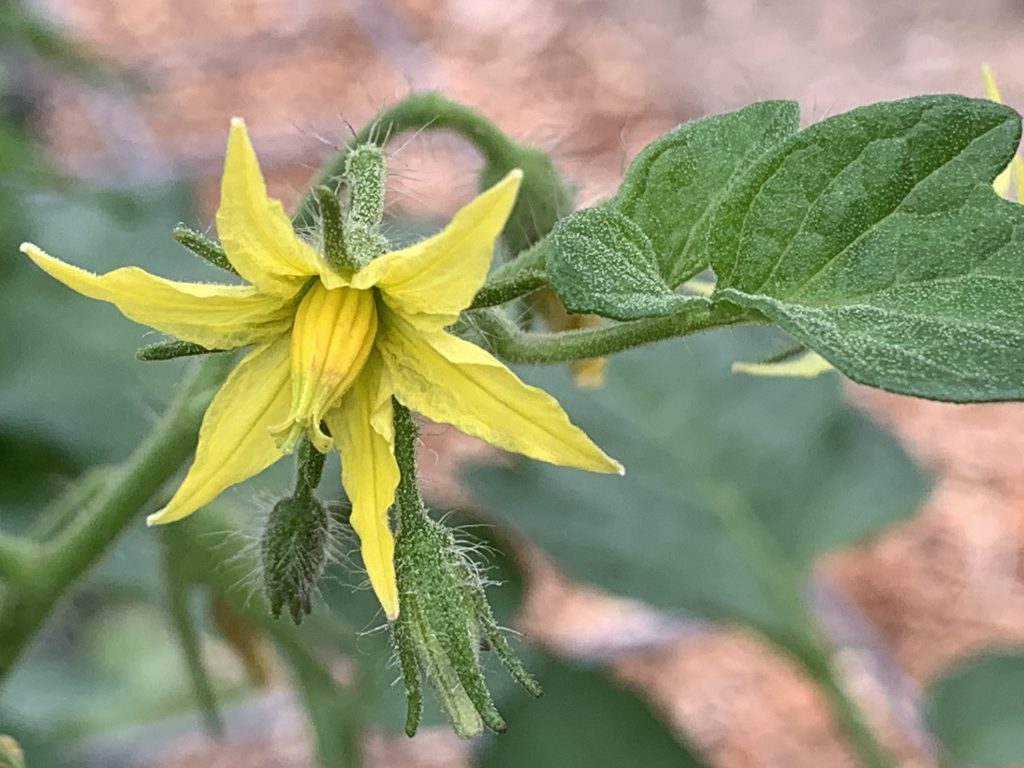
Selection
We should try not to collect seed from diseased or struggling plants. We want the best fruits from the best plants. We need to ensure that the plant form, leaf type, size, shape and colour of the fruit is what we expect for that variety.
Other features to avoid are fruit showing fasciation, as per the photos below.
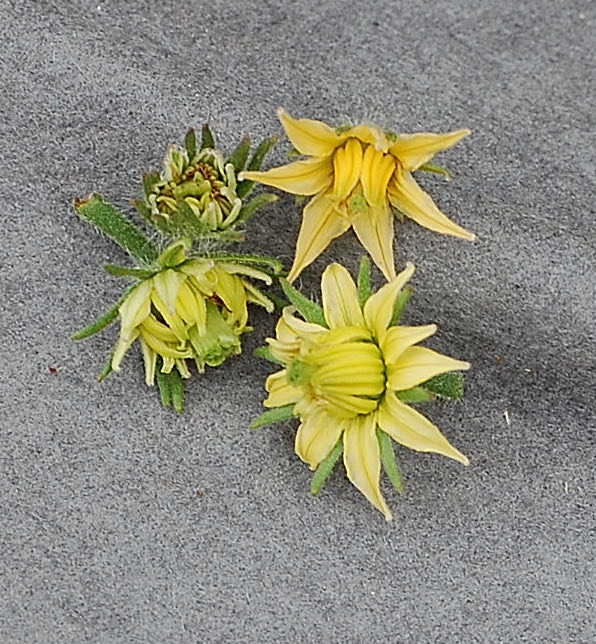
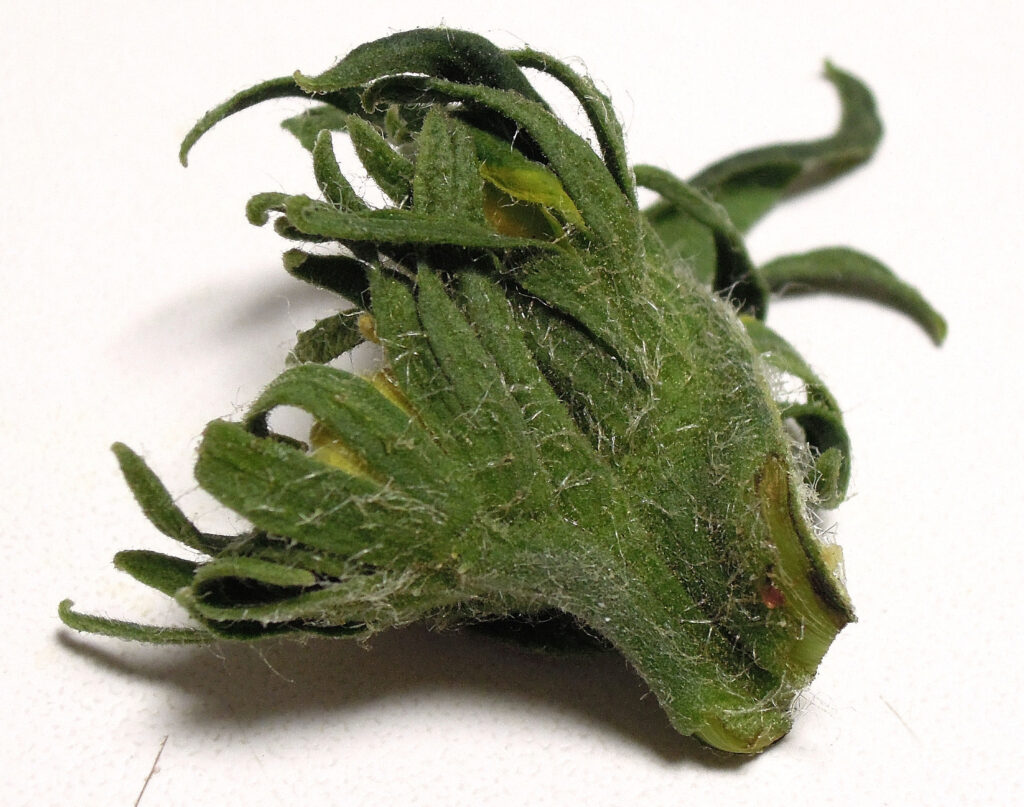

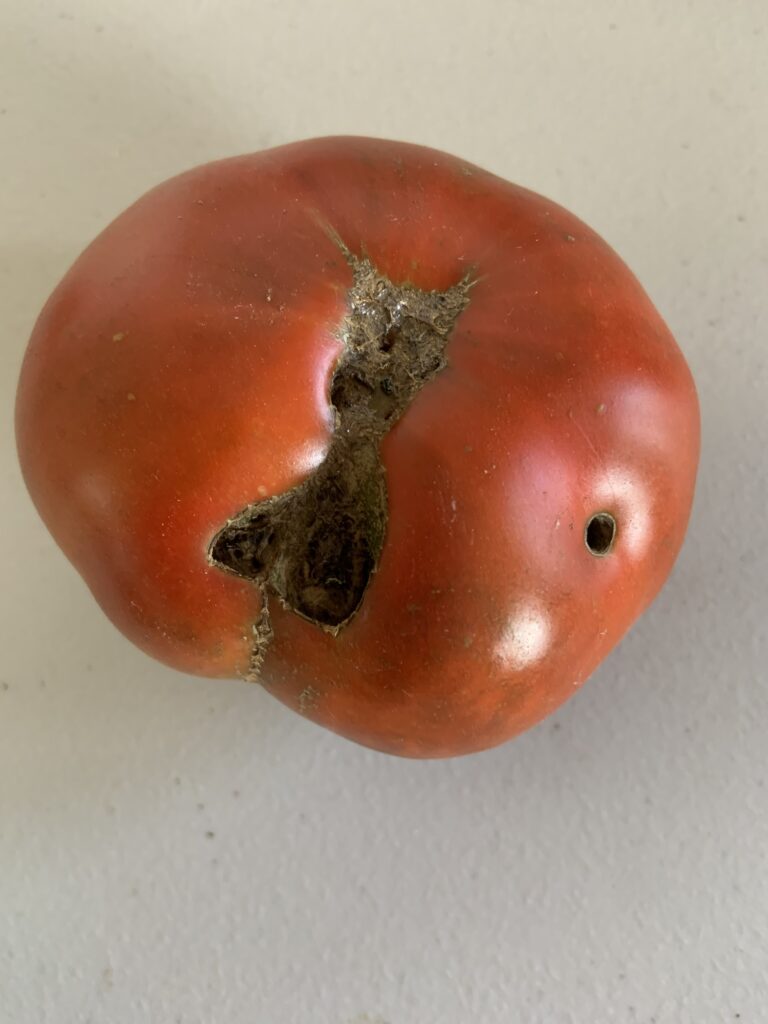
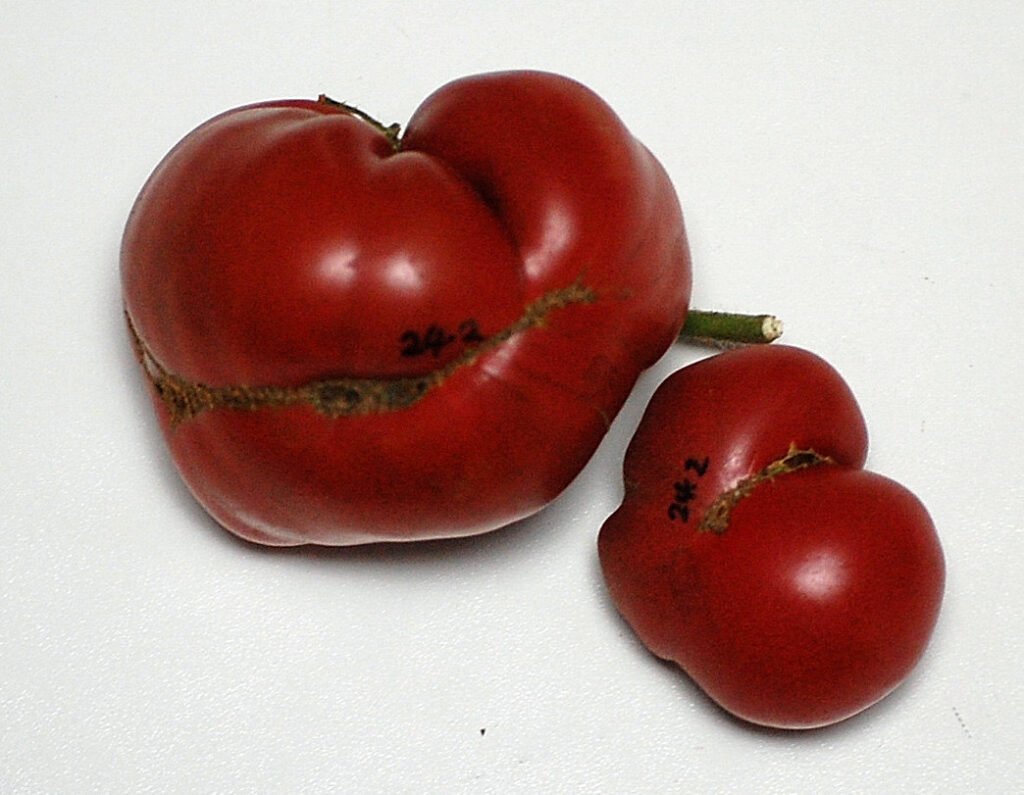

Harvest
The fruit are harvested when they are completely ripe for eating. The fruit should have a slight ‘give’ to the touch. Fruit should be very ripe but not rotting. Try to collect seed from fruit early in the season as the biggest and best fruit are usually formed then. Later fruit tend to get smaller as the plant heads towards the end of its life.
Processing
Fruit should be processed for seed either as soon as they are picked or within a few days. We do not want them to start rotting.
You can just squeeze some seeds out on to kitchen paper, leave them to dry and then store them for next year. This quick and easy method works for many people.
A better method – particularly if you want to share your seeds – is to use a wet fermenting process to remove the gel sac from around each seed. This removes the germination inhibitor which is in the gel sac so that you get faster germination at planting. It also helps to remove some diseases that might otherwise be carried along with the seed.
To use the wet fermenting process, scoop the seed (and pulp) from your tomatoes directly into a jar and leave it at room temperature for a day or so. The advice used to be to ferment for 3 or more days, but recent tests have shown that this can damage some seeds and a shorter time works.
It will start to ferment and a layer of mould may form on the surface. This is OK. Give the jar a stir to physically help the seeds separate from the gel.
Fill the jar with water. The pulp will float and the seeds will sink. Tip off the fermented pulp. You may need to repeat this step until you only have clean seed left in the jar.
Spread the seed out to dry on a tea towel or screen or something similar and move them around occasionally so they don’t stick together.
Leave to dry for about a week, then place in a paper bag or envelope so they can continue to dry.
Storing tomato seeds is fairly easy. We just need to make sure they are really dry before sealing them away. We don’t need to worry about pests as none usually lay eggs into tomato seeds.
Like all other seeds, tomato seeds will store best in a sealed container in cool, dark and dry conditions.
Other Resources
Tomatoes were the focus of the National Seed Savers Zoom in February 2025. The session started with a short genetic history of the tomato. The recording is available here.
Contributors
Liz Worth, Julie Davies
